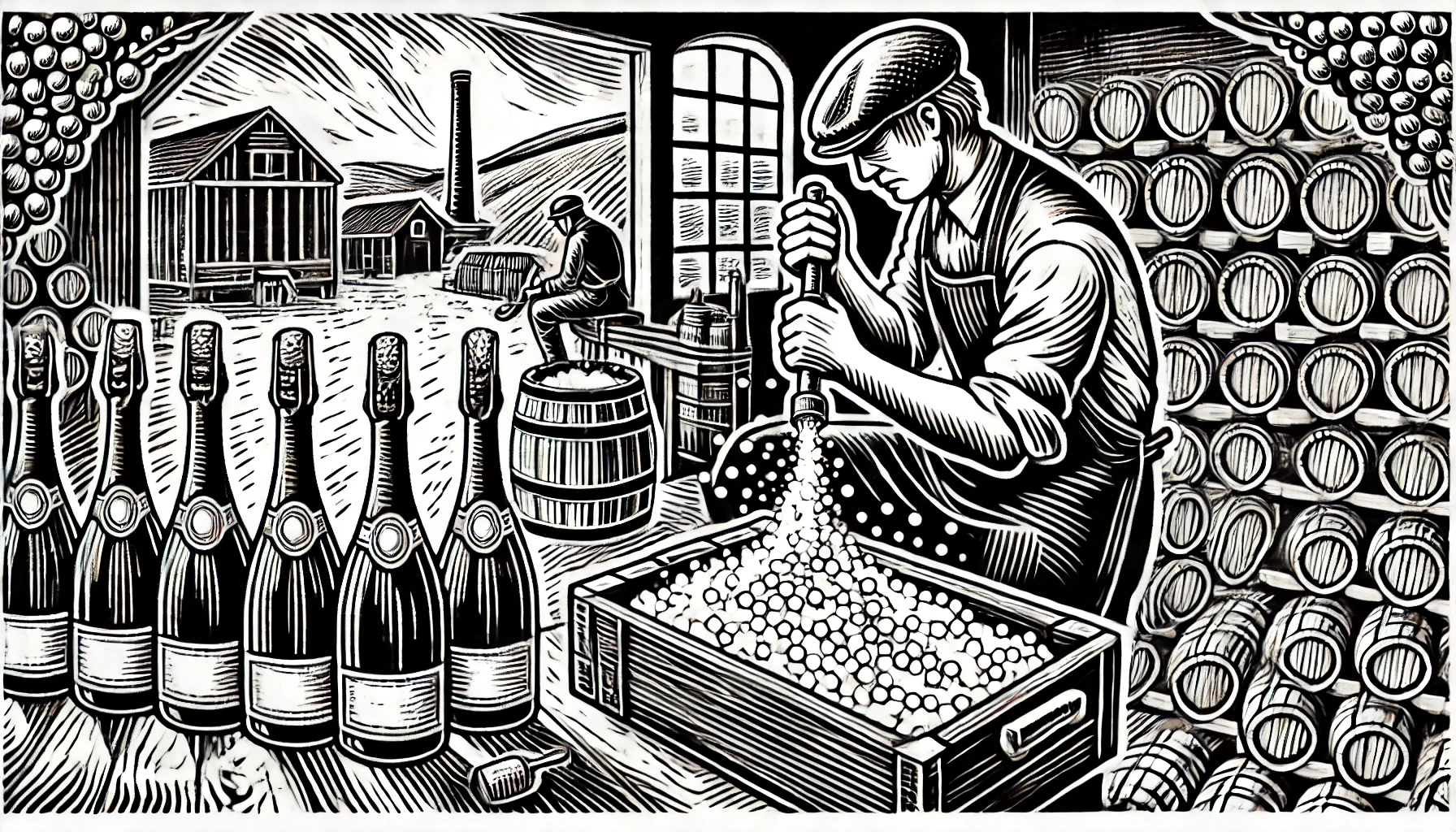
Disgorgement, or dégorgement, is a crucial step in the traditional method of sparkling wine production, marking the point at which the sediment from secondary fermentation is removed from the bottle. After the wine undergoes riddling to collect the dead yeast cells, or lees, into the neck of the bottle, winemakers must remove this sediment to ensure the wine’s clarity and cleanliness.
The disgorgement process begins by chilling the neck of the bottle in a freezing solution. This causes the sediment to form a solid plug. Once the neck is frozen, the bottle is turned upright, and the temporary crown cap is removed. The internal pressure created by the carbon dioxide (which formed during secondary fermentation) forces the frozen plug of sediment out of the bottle in a quick, clean motion. This step ensures that the wine remains clear, free of sediment, and ready for final preparation.
After disgorging the sediment, winemakers add a dosage known as liqueur d’expédition, a mixture of wine and sugar, to top off the bottle and adjust its sweetness level. The type and amount of dosage depend on the desired final product. The styles are ranging from Brut Nature (no added sugar) to Doux (sweet).
It Requires Precision
Disgorgement requires precision because it directly impacts the wine’s carbonation and flavor profile. If not done carefully, too much wine or carbonation could be lost in the process. In the hands of skilled winemakers, however, disgorgement allows for the final refining of the wine. They are removing any unwanted sediment while preserving the bubbles and structure.
The time between disgorgement and release can also affect the wine’s characteristics. Some sparkling wines benefit from further aging after disgorgement, while others are meant to be consumed shortly after. Disgorgement is the final step before corking and caging the bottle, ensuring that sparkling wine is pristine and ready to enjoy.
Curious about more wine terms and insights? Visit our Wine Wiki section and explore the basic wine terms for expert definitions and tips!